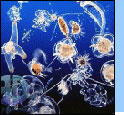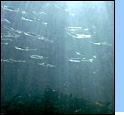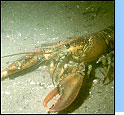 |
 |
Estuarine Science

Biological Communities
Plants and animals live together and interact with one another in groups known as communities. Communities can be very small, such as a tide pool or very large, encompassing the entire bay. Just as people may live in one town and vacation in another or even own homes in two different cities, some species may belong to more than one community. Some organisms use different habitats throughout their life cycles. Communities change in structure and composition with seasons and over long periods of time. They are affected by geography and the chemistry of the environment. They also change in response to a wide variety of pollutants.
 (Image credits are listed in Image Index)
(Image credits are listed in Image Index)
|
 |





